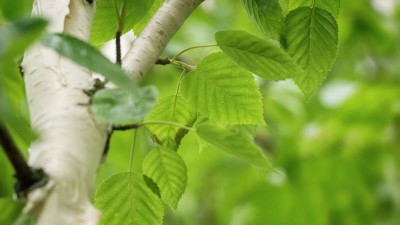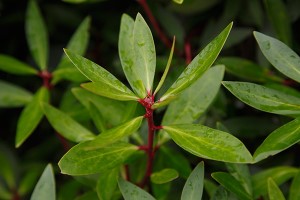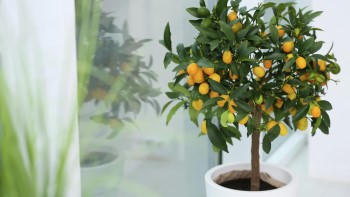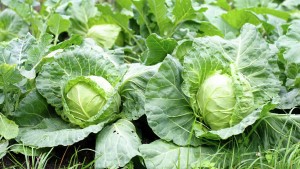- Garden Care
- 4,001
Silver Birch trees are an attractive deciduous tree that is grown for both its ornamental and practical uses. They are most commonly found in parks and gardens, providing an attractive backdrop for other plants. Silver Birch trees require minimal care and maintenance, but there are a few things to keep in mind if you are planting or caring for them.
Here at Garden Pie, we shall look into how to grow and care for Silver Birch trees.
Table of contents [Show]
- 1 What You Need to Know About Silver Birch Trees
- 2 Appearance and Characteristics
- 3 Uses for Silver Birch
- 4 Steps to Plant and Grow a Silver Birch Tree
- 5 Caring Tips for Silver Birch
- 6 How and When to Prune Silver Birch
- 7 Diseases and Pests Affecting Silver Birch
- 8 Steps to Propagate Silver Birch Tree
What You Need to Know About Silver Birch Trees
Silver birch trees (Betula pendula) are one of the most popular trees in Australia. They are native to Europe, Asia and North America, and are known for their graceful, paper-like white bark. Silver birches are fast-growing, hardy trees with a shallow root system. They are relatively easy to grow and care for, and can live up to 80 years.
Below are important information you need to know about Silver Birch trees:
- Name: silver birch (Betula pendula).
- Height: eventually 8m+ with age.
- Foliage: deciduous.
- Climate: cold temperate, warm temperate.
- Soil: prefers deep, well-drained soil.
- Position: full sun but will tolerate light shade.
- Flowering and fruiting: small cylindrical seed clusters.
- Feeding: regular feeding with a balanced, controlled-release fertilizer.
- Watering: silver birch requires reliable watering, especially in hot and dry periods.
Appearance and Characteristics
- Silver birches are deciduous trees, meaning they shed their leaves every year.
- They can reach heights of up to 30 meters and have a conical shape when young.
- As they mature, their crowns become rounder and their trunks become scaly.
- Their leaves are triangular and serrated, and have a light green color.
- The bark of the silver birch is white and papery, and peels off easily.
Uses for Silver Birch
Silver birches have a number of uses.
- Their wood is used for furniture and flooring, and the bark is used for making baskets and canoes.
- The sap can be tapped and made into syrup, and the leaves can be used to make tea.
- Silver birches also improve air quality by releasing oxygen into the atmosphere.
Steps to Plant and Grow a Silver Birch Tree
- Choose an appropriate location. Silver birches prefer full sun and well-drained soil.
- Dig a hole twice as wide as the root ball of the tree, and slightly deeper.
- Place the tree in the hole and fill it with soil, making sure the roots are covered.
- Water the tree and mulch around it.
- Prune the tree if necessary.
Caring Tips for Silver Birch
- Water the tree regularly during dry periods.
- Mulch around the tree to help it retain moisture.
- Fertilize the tree with a balanced fertilizer once a year.
- Protect the tree from strong winds by staking it.
- Prune the tree in late winter or early spring.
How and When to Prune Silver Birch
Silver birches are relatively easy to prune.
- Pruning should be done in late winter or early spring, before the sap starts flowing.
- Remove dead, diseased and crossing branches, as well as any branches that are growing too close to the ground.
Diseases and Pests Affecting Silver Birch
Silver Birch (Betula pendula) is susceptible to several diseases and pests that can cause significant damage or even death. These include aphids, caterpillars, borers, and powdery mildew.
1. One of the most common diseases affecting Silver Birch is canker, which is caused by a fungus called Nectria galligena. The disease causes brown spots to form on the stems and leaves, and eventually the bark may start to crack and fall off. Canker can be managed with fungicides and pruning of the affected branches.
2. Another common disease of Silver Birch is Leaf Spot, which is caused by a variety of fungi. The disease causes circular spots to form on the leaves, which can eventually turn brown and fall off. Leaf Spot can be managed with regular pruning, as well as fungicides applied in the spring and summer.
3. Silver Birch is also susceptible to several insect pests, including aphids, mites, and borers. Aphids feed on the sap of the tree and can cause the leaves to curl and distort, while mites feed on the underside of the leaves and cause them to yellow and drop off. Borers can cause extensive damage by tunneling through the trunk and roots, which can eventually lead to the death of the tree.
These diseases and pests can be managed with regular pruning, as well as the use of insecticides and fungicides when necessary. In extreme cases, it may be necessary to remove the affected tree and replace it with a more resistant species.
Steps to Propagate Silver Birch Tree
- Collect seeds from healthy silver birches in late summer.
- Soak the seeds in warm water for 24 hours.
- Plant the seeds in a pot filled with moist, well-draining soil.
- Place the pot in a warm, sunny location.
- Water the soil regularly and keep it moist.
- Transplant the seedlings into the ground when they are ready.
Conclusion
In fact, Silver Birch Tree is a beautiful and graceful tree that is easy to care for. With proper planting, pruning, fertilizing and pest control, you can enjoy the beauty of a Silver Birch Tree in your yard for years to come.
Ways of caring for Silver Birch Tree includes:
- Prune in late winter or early spring to encourage new growth.
- Mulch the base of the tree to conserve water and protect the roots.
- Water the tree deeply and regularly during the growing season.
- Fertilize the tree annually with a balanced fertilizer.
- Plant the tree in an area with full sun and well-drained soil.
- Avoid planting silver birch trees in areas prone to strong winds.
- Monitor for pests such as caterpillars and aphids.
- Protect the tree from deer with a fence or netting.
- Regularly check for signs of disease, such as cankers or wilting.
- Provide supplemental irrigation during periods of drought.
- Remove any dead branches to prevent the spread of disease.
- Wrap the trunk in burlap in late fall to protect from winter cold.
- Provide adequate spacing between silver birch trees and other plants.
- Use a sharp pruner to make clean, precise cuts when pruning.
- Keep the area around the tree free of weeds and other debris.
- Plant native companion plants to attract beneficial insects.
- Plant silver birch trees away from any structures or roads.
- Apply organic mulch to the base of the tree to retain moisture.
- Limit pruning to no more than one-third of the tree's canopy.
- If needed, use a fungicide to control fungal diseases such as leaf spot.





